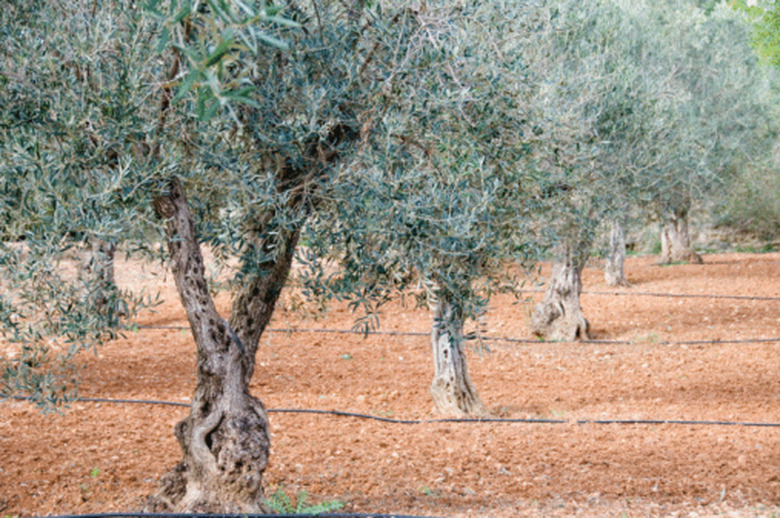Can I Grow An Olive Tree In Pennsylvania?
Olives were first grown in the Mediterranean around 2,500 B.C., according to the California Rare Fruit Growers Inc. Today, olive trees are grown where the climate is most favorable. Olive trees need the proper climate to produce fruit, as too low of a temperature will damage or kill them.
Geography
California and Arizona are the leading olive producers in the U.S. because of their warm growing seasons. Olive trees can't grow in climates where temperatures frequently dip to around and below 15 degrees Fahrenheit for long periods of time, such as Pennsylvania during the winter.
Significance
Although olive trees cannot grow if temperatures are unfavorable, they require a cool-down period of about 50 degrees Fahrenheit that enables them to prepare for flowering in the spring.
Potential
In Pennsylvania, olive trees can be grown in greenhouses, where climates can be controlled during the cold, winter months.
Grow An Olive Tree From A Seed
When you've tasted the perfect olive, you can't help but wonder if you can save the pit and grow your own tree. An olive tree (Olea europaea) can be grown from a saved seed, which is inside the pit, but it may not bear fruit true to what you've just eaten. For saved seeds and purchased seeds, start by cutting off one end of the outer seed coating; then soak the seed in fresh water for 24 hours. This helps speed up germination. Because these seeds are difficult to germinate, soak more seeds than you'll need to offset losses. If you live in U.S. Department of Agriculture plant hardiness zones 8 through 10, sow olive seed directly in the ground when soil temperature warms to 80 degrees Fahrenheit in spring. An olive tree grows to 35 feet tall and spreads 30 feet wide. Don't fertilize at this point. Varieties that are not self-pollinating require another variety nearby to pollinate and produce fruit.
- Olives were first grown in the Mediterranean around 2,500 B.C., according to the California Rare Fruit Growers Inc. Today, olive trees are grown where the climate is most favorable.
- Although olive trees cannot grow if temperatures are unfavorable, they require a cool-down period of about 50 degrees Fahrenheit that enables them to prepare for flowering in the spring.
References
- Olive Oil Source: Growing Olive Trees
- California Rare Fruit Growers, Inc.: Olive
- Texas A&M Aggie Horticulture: Propagation of Selected Plant Species
- Missouri Botanical Garden: Olea Europaea
- White Flower Farm: Growing Guide Olive Tree
- Walter Reeves: Olive Tree -– Growing from Pit
- North Carolina State University Cooperative Extension: Fertilizing Fruit Trees and Blueberry Bushes
- California Polytechnic State University: Olea Europaea "Mission"
- California Polytechnic State University: Olea Europaea
- International Olive Council; Olive Nursery Production and Plant Production Techniques; Section C, Chapter 5: I2 Sowing
- University of Florida IFAS Gardening Solutions: Olives
